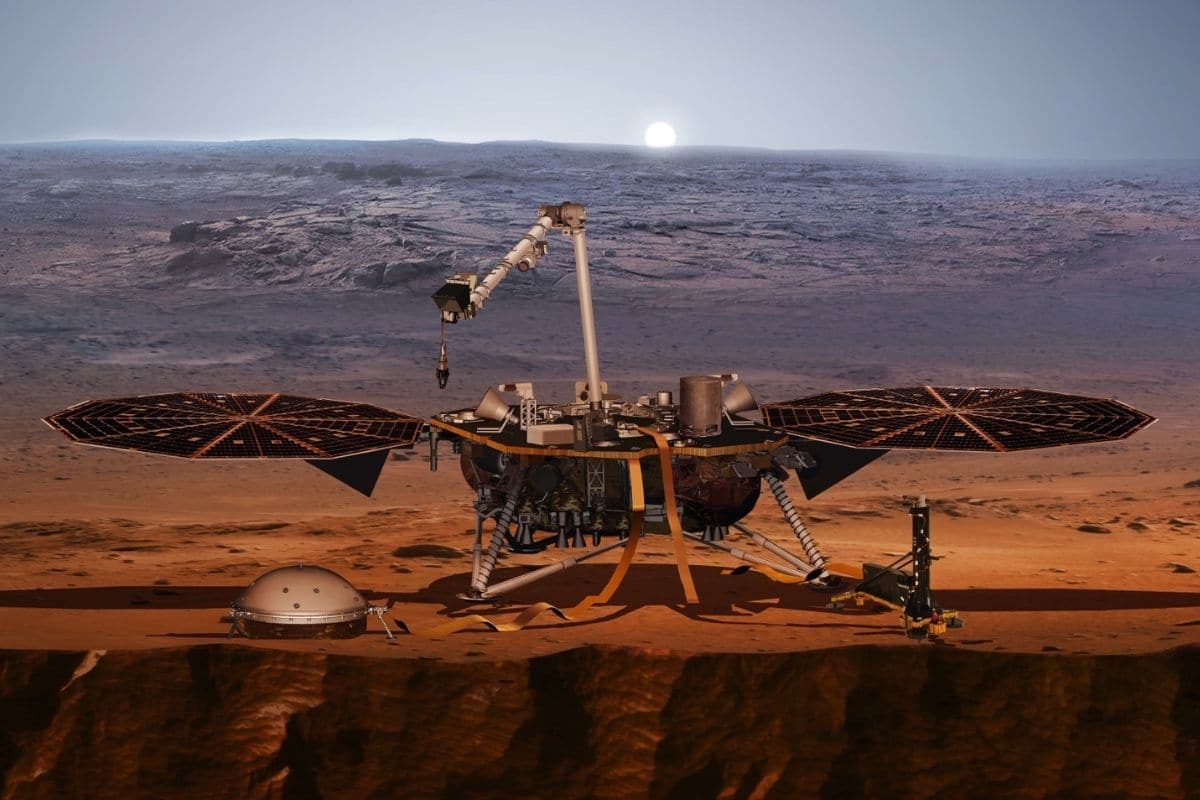
The quake hit Mars and measured five on the Richter scale.
Marslander InSight has measured a very strong earthquake on Mars. The quake struck on May 4 and will go down in the books as the strongest quake ever recorded on any other planet at a magnitude of five on the Richter Scale. The American space agency – owner of InSight – has announced this.
strong quake
Marslander InSight set foot on Mars in 2018 and not long after placed a seismometer on the surface of the red planet. That seismometer has already registered more than 1,300 marsquakes. Until recently, an earthquake that occurred in August 2021 and measured 4.3 on the Richter magnitude scale was the strongest Mars quake ever. But last week’s quake is well beyond that.
It is currently unclear where and what exactly caused the quake. To do this, the measurements must first be examined in more detail. “Since we put our seismometer on Mars in December 2018, we’ve been waiting for ‘the big one’,” said Bruce Banerdt, principal investigator on the InSight team. “This quake is definitely going to give us a whole new view of the planet’s interior.”
Goal
Observing tremors on Mars is not an end in itself, but rather a means to better understand the red planet. The seismic waves travel through the crust, mantle and core of the red planet and undergo changes under the influence of those different layers in the interior of Mars and the materials that make them up. Therefore, by studying the waves and the changes they undergo, researchers can get a better idea of the thickness and composition of these inner layers. And that in turn provides more insight into the composition of Mars as a whole and the way in which the red planet – but also other rocky worlds – came into being.
Here on Earth, earthquakes are usually caused by the fact that the tectonic plates that make up the Earth’s surface move relative to each other. However, the surface of Mars is not made up of plates. How can there be so many earthquakes there? Researchers aren’t sure yet, but the quakes are suspected to originate in volcanically active areas on the red planet.
It is unclear whether even more powerful tremors will be observed on Mars in the future. Prior to the InSight mission, researchers expected the strongest quakes recorded by their seismometer on Mars would have a magnitude close to the magnitude of the massive quake measured last week. Whether the planet is capable of more remains to be seen.
In addition, the question of whether InSight can measure even more powerful quakes, naturally also depends on the lander itself. Because how long can this lander – designed to do research on the Martian surface for about two years – last? That too, of course, always remains to be seen. And in that regard, a somewhat more exciting period is now approaching; winter is about to begin in the area where InSight is located. This means that the amount of sunlight that falls on InSight – and that the lander needs to generate energy – decreases sharply. This weekend, circumstances forced InSight into safety mode for a while; to save energy, all non-essential activities were temporarily suspended as a precaution. It cannot be ruled out that InSight will face even more problems in the near future and that non-essential activities – such as monitoring earthquakes – will be temporarily suspended. But even if InSight manages to survive the Martian winter, its days may be numbered; After the mission was previously extended by two years, it now ends in December 2022. It is unknown whether NASA deems a second extension desirable and feasible.
Source material:
†NASA’s InSight Records Monster Quake on Mars” – NASA
Image at the top of this article: NASA / JPL-Caltech